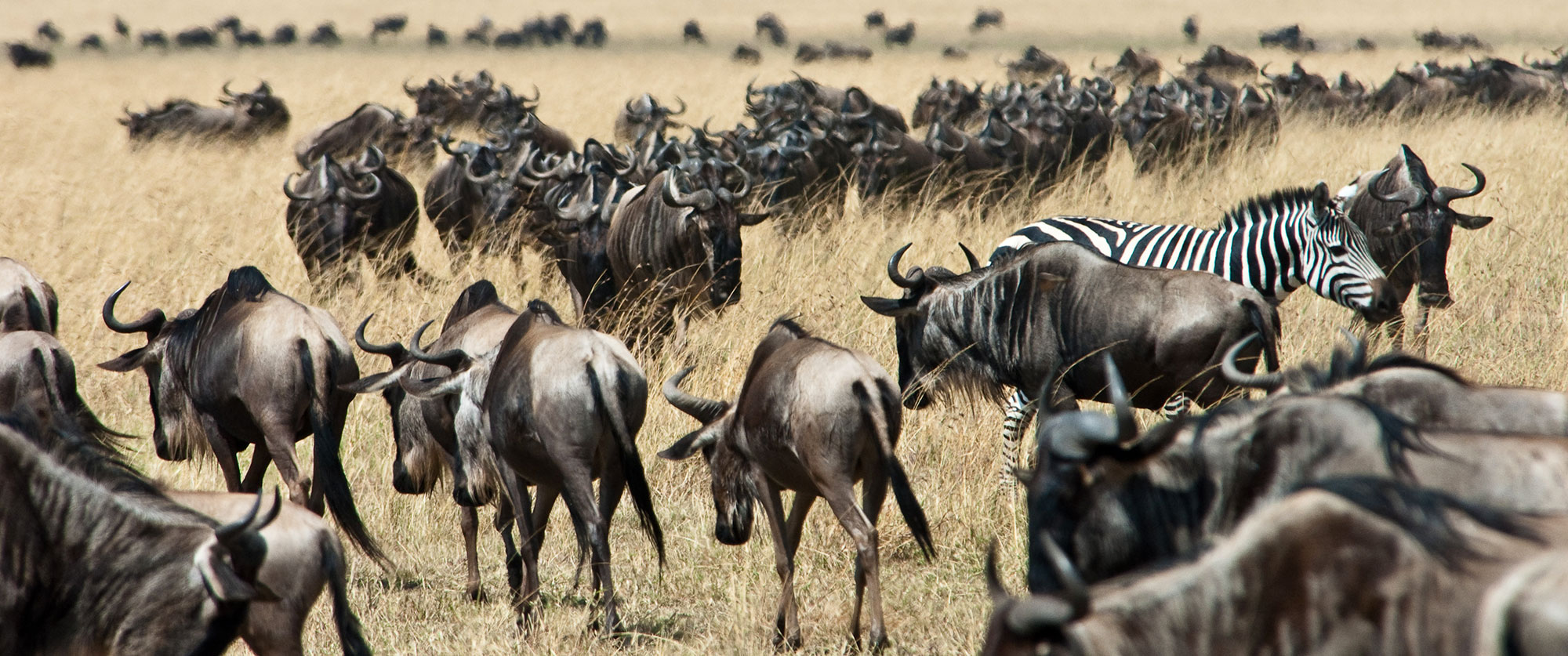The Great Migration — Travel That Respects the Wild
When travelers think of the Great Migration, they often picture the dramatic river crossings — thousands of wildebeest surging through crocodile-filled waters, spray flying, hooves pounding. Between July and early October, this breathtaking scene unfolds exactly as you’ve seen in documentaries. But it’s also the busiest time of year — when dozens of vehicles may crowd a single crossing point, sometimes putting unnecessary pressure on the animals.
In recent years, the Mara and northern Serengeti have seen a surge in camps, lodges, and safari traffic. While tourism plays a vital role in conservation funding, high concentrations of vehicles can disrupt natural behaviors and diminish the sense of wilderness many travelers seek.
The truth is, the river crossings are only one chapter in the Migration’s year-round story. With thoughtful planning, you can witness vast herds — and the predators, scavengers, and other species that follow them — in a way that minimizes stress on the animals, supports conservation, and still delivers extraordinary encounters.
When to Experience the Migration Responsibly
- Mid-January – Quiet Ndutu plains, Migration in full swing, and calving season approaching. Fewer visitors mean calmer conditions for wildlife.
- March – Herds remain active while the Serengeti feels open and peaceful.
- April & May – The central Serengeti’s quietest months. Rains bring lush grazing, and game viewing is rich with almost no vehicles to disturb the animals.
- June – The western corridor comes alive, including possible Grumeti River crossings, with minimal safari traffic.
- Late October – Visitor numbers drop sharply; any remaining northern crossings happen with far less human presence.
- Early December – The first herds return to Ndutu; combining Ndutu and Namiri Plains offers variety while dispersing tourism impact.
Why Ethical Timing Matters
Traveling outside peak season isn’t just about avoiding crowds — it’s about giving wildlife the space and freedom they need to thrive. When vehicles aren’t jostling for position, animals can cross rivers, hunt, and feed without added stress. You also gain more freedom to follow natural events, linger at a sighting, or simply enjoy the savannah’s quiet beauty.
Our trusted local partners follow strict ethical wildlife viewing guidelines and work to steer guests toward low-impact encounters — from a solitary lion hunt to a hidden river crossing with only a few vehicles present.

The Great Migration is a continuous, ever-changing story. The river crossings are spectacular, but the Serengeti and Mara offer countless other magical moments — and the most respectful, unforgettable experiences often happen when no one else is watching.
Contact us at Africa Endeavours to plan your next trip.